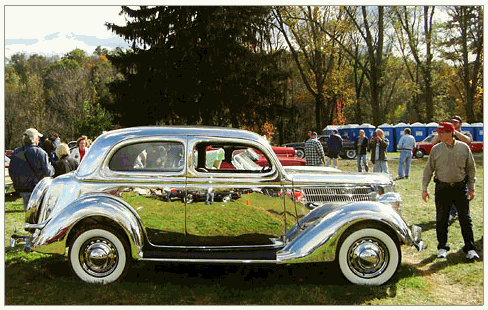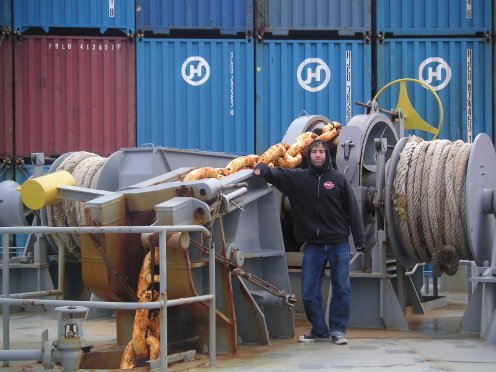The trouble with mutual funds is that investors can feel as though they have put their money in a black box. The 90 million Americans with money in funds know little about fees, what securities their money is invested in and who is in charge.
Daniel Carroll, who started investing when he was 15, thinks he has a way to let average investors learn about investing while experts manage the money. In 2008, he started KaChing, a Web site where 400,000 amateur and professional investors manage virtual portfolios. Others have logged on to see what the investors on the site are doing and make the same trades in their own real portfolios.
On Monday, KaChing is to add a new twist. Customers can set up brokerage accounts that automatically mirror the trades of a money manager, some of them professionals.
“The idea of an asset manager showing all his research, his holdings — it’s unheard-of,” said Mr. Carroll, now 27 and the vice president for business development at KaChing. “In the financial industry, the idea is that information is currency; they protect it with their lives.”
Individuals are desperate for advice and transparency from people who help them manage their money, and mutual funds do not provide enough, said Andy Rachleff, KaChing’s chief executive and a longtime venture capitalist who co-founded Benchmark Capital.
“The mutual fund industry is a $10 trillion industry that has seen no innovation for 25 years. The Internet has had no impact,” Mr. Rachleff said.
KaChing has attracted a roster of prominent early investors from Silicon Valley who have financed the company with $3 million. They include Marc Andreessen, co-founder of Netscape; Kevin Compton of Kleiner Perkins Caufield & Byers; and Jeffrey Jordan, chief executive of OpenTable, the online reservation service.
The angel investors have also been investing their own money through KaChing during the pilot period. “The concept is great — the ability to tap into not just the wisdom of the crowd, but to be able to identify and invest with the particular geniuses in the crowd that stand out,” said Mr. Andreessen, who has invested $100,000 using the site.
Customers will be able to open a brokerage account with Interactive Brokers and link their account with their choice of investors on KaChing. KaChing charges customers a single management fee of 0.25 percent to 3 percent, set by each investor. KaChing keeps a quarter of the fee, and the investors get the rest.
Each time the investors make a trade, KaChing will automatically make the same trades for the customer. Customers can log on whenever they want to check their portfolio’s performance. They can send the investor private messages and receive alerts if the investor does something unusual. With the click of a mouse, customers can stop mirroring an investor.
KaChing rates investors on the site by giving them a score the company calls Investing IQ. The formula is modeled after one used by managers of Ivy League endowments, Mr. Rachleff said, and considers risk-adjusted returns, whether investors stick to their strategies and the quality of the research they provide to explain their ideas.
So-called genius investors are those with high scores that have at least a yearlong record on KaChing. The genius investors sign regulatory documents that they will not break the law, including “front-running” stocks, which is the illegal practice of buying or selling a security for their own account with the advance knowledge of pending orders.
KaChing monitors trades in the personal brokerage accounts of each of its model investors and their families. The site is also a registered investment adviser with the Securities and Exchange Commission.
Only a dozen people have qualified as genius investors so far. They include a retired lawyer in Omaha, a student at Chapman University and the founder of a Bay Area investment firm.
For investors, KaChing is a way to make some money on the side or expand their existing business. Andrew F. Mathieson, founder of the investment firm Fairview Capital in Greenbrae, Calif., said he hoped to use KaChing to cater to people who did not meet the firm’s million-dollar minimum.
“Most investment products are sold rather than bought,” he said. “Our vision of this is it’s a product that will be bought by investors on the basis of the information we’re putting on the site.”
Recommend More Articles in Technology » A version of this article appeared in print on October 19, 2009, on page B4 of the New York edition.
![Reblog this post [with Zemanta]](http://img.zemanta.com/reblog_e.png?x-id=0da6a38a-6740-8f9d-b286-eeda19e7d874)

![Reblog this post [with Zemanta]](http://img.zemanta.com/reblog_e.png?x-id=6d50d23a-8f2f-8ea3-983b-99bab991e065)
































 The Wieliczka Salt Mines http://www.cyf-kr.edu.pl/krakow_i_okolice/?a=wieliczka
The Wieliczka Salt Mines http://www.cyf-kr.edu.pl/krakow_i_okolice/?a=wieliczka










